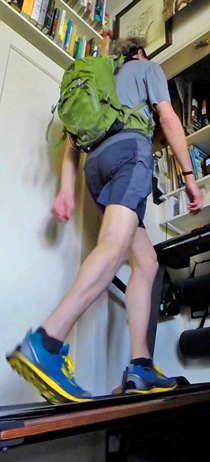What Does It Mean For You?
First, what is it? CRF is part of overall physical fitness. It’s the capacity of your circulatory, respiratory and muscle systems to supply and use oxygen during sustained activity like walking and running. In clinical studies, oxygen “uptake” is usually measured during a treadmill or cycle test.
Almost everyone can suck in a lot of air. But it’s your ability to efficiently use the oxygen in each breath that determines how fast and far you can go.
Now get this: every half-mile-per-hour increase in speed capability is associated with a 15% lowered risk of death from cardiovascular disease and all other non-natural causes. Increase your jogging speed to 6 mph from 5 mph and reduce your health risks by better than 25%.
Comparing this with weight loss studies, that’s a health benefit that’s comparable to reducing your waistline by almost 5 inches. Talk about an ounce of prevention being worth a pound of cure.
How do you get the benefit?
Practice. The more you walk or run, the easier it becomes to walk or run faster and farther. Because your CRF is improving. Better use of oxygen means your muscles, lungs and heart have to work less to enable each and every step. Get goin’.
Have a nice 30-minute jog in 3 square feet. Actual aerobic exercise. No track, no field, no treadmill. Real sweat. Real calorie burn. Step on it.
Make believe you’re out on a spectacularly beautiful trail with one of my Treadmill Trails on your phone or tablet. Walk, jog or run in your living room. You never have to do it in the rain. Or heat. Or cold.
The Aerobics Math: How many miles plus how much exercise time subtracts how much belly fat? It’s not rocket science, but I think it’ll help you make sense of making an aerobic exercise schedule that works for you.
All you need
A simple Step Deck for $20
Bigger and Better but not Cheaper: A terrific Treadmill for $550
Or an exceptional Elliptical for $1,029
Incline Training on a Treadmill with a weighted backpack before a long steep hike
This Duke University study looked at how much walking is necessary to prevent gaining weight (and belly, or “visceral”, fat) – and how much to reduce visceral fat. Because “Inactivity leads to significant increases in visceral fat, and a moderate exercise regimen can keep this potentially dangerous form of fat at bay.”
